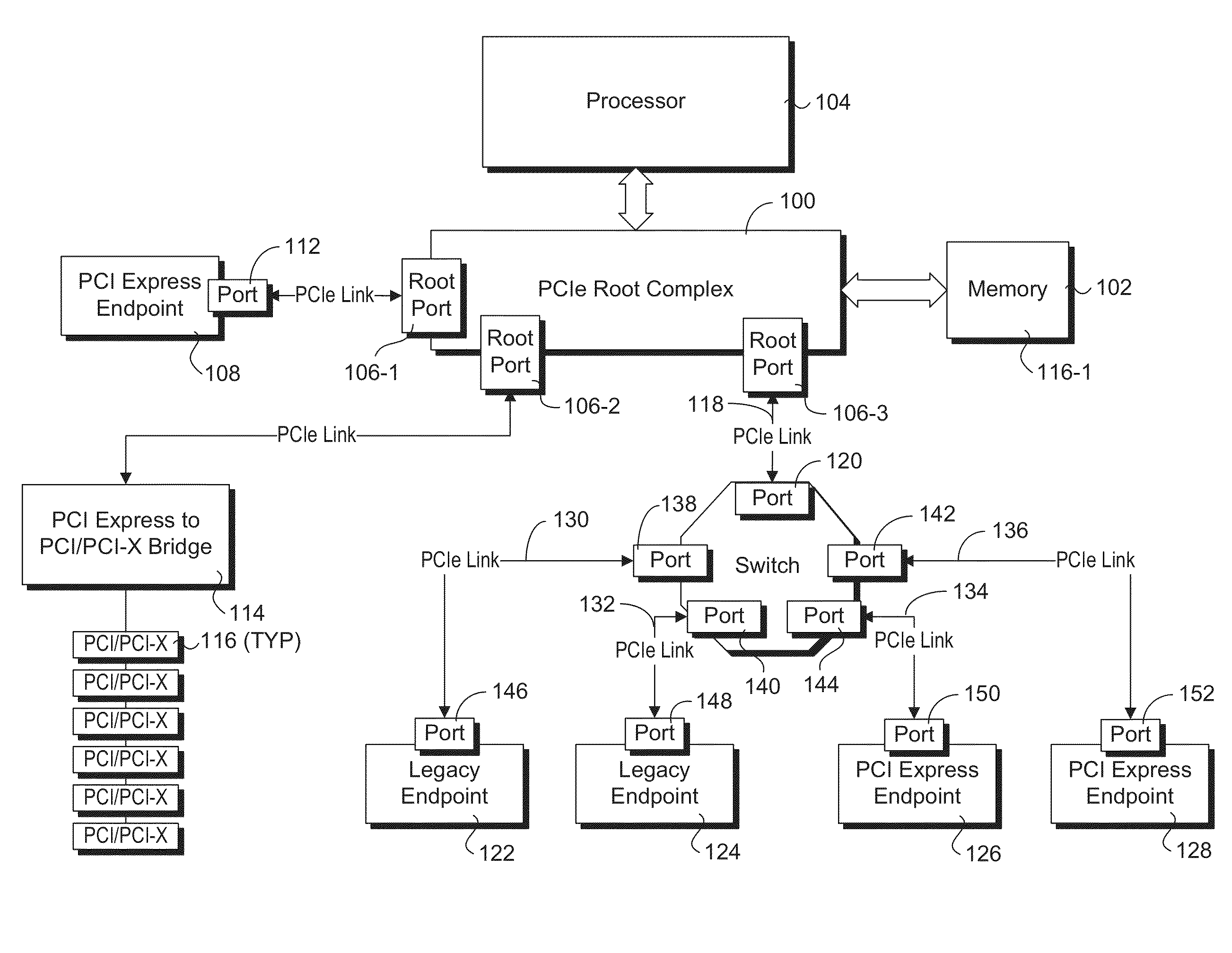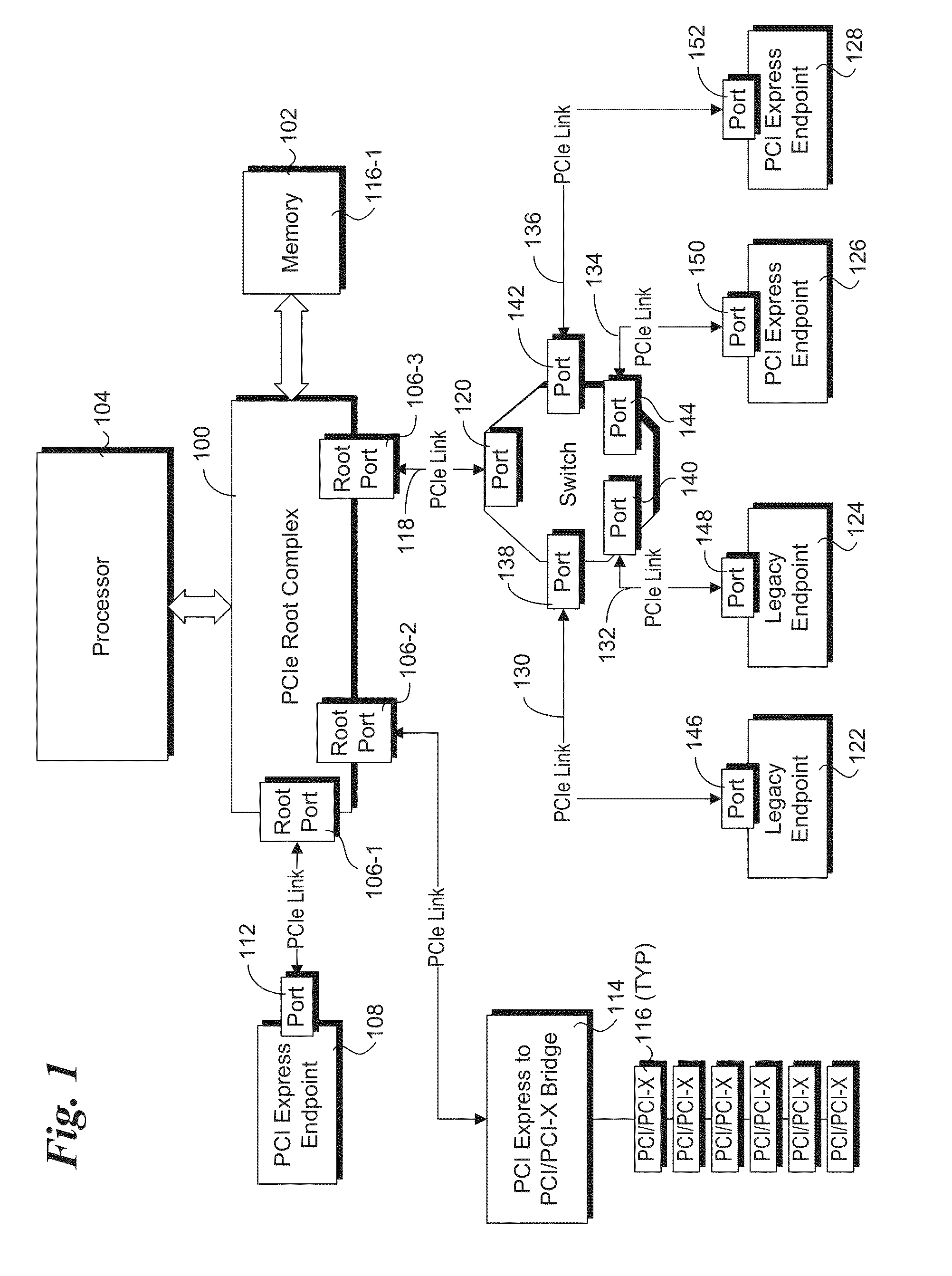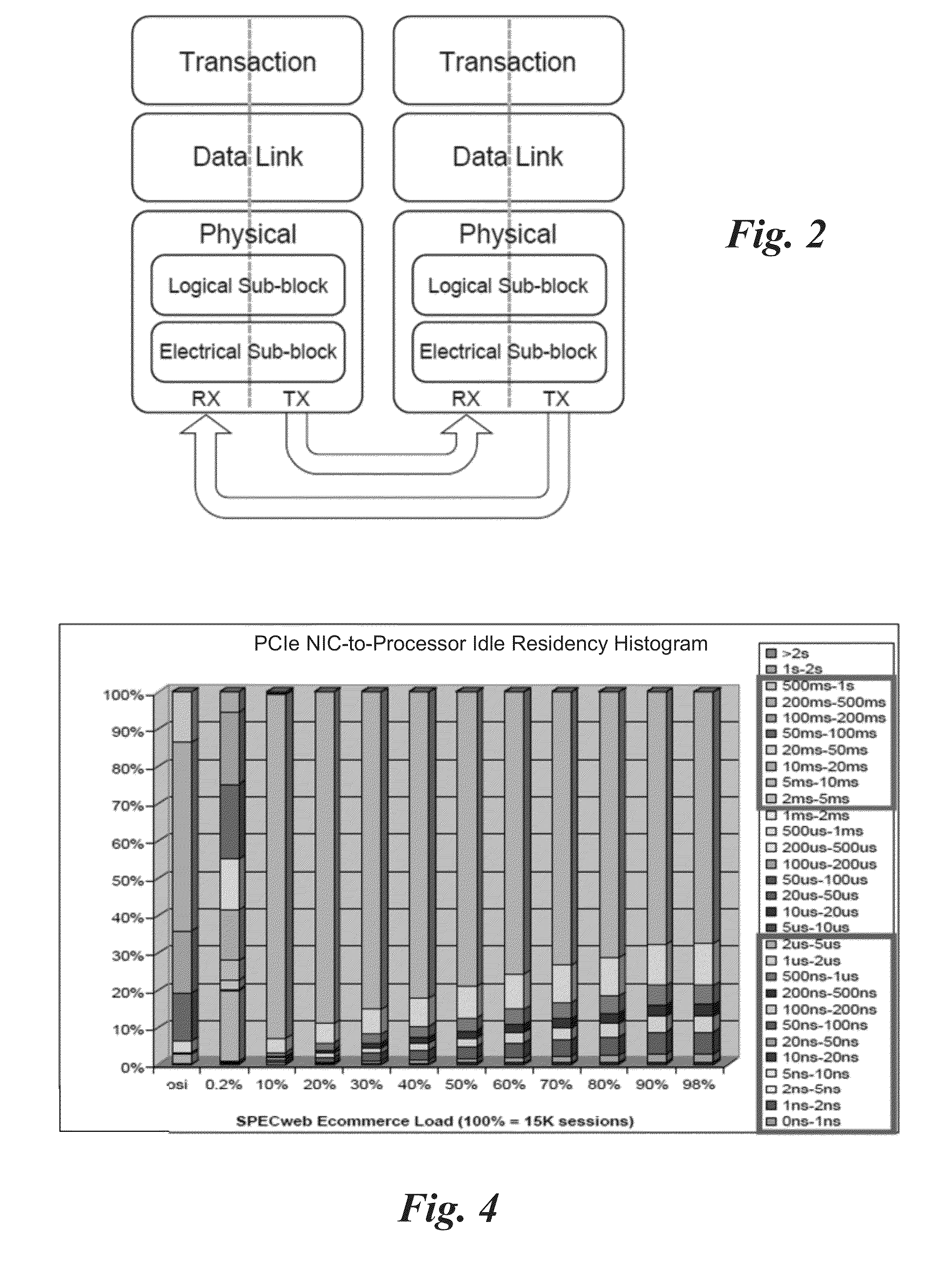Adaptive low-power link-state entry policy for active interconnect link power management
a low-power link state and power management technology, applied in the field of computer systems, can solve the problems of increased die temperature, increased power consumption of processors and devices, and undesirable power consumption
- Summary
- Abstract
- Description
- Claims
- Application Information
AI Technical Summary
Benefits of technology
Problems solved by technology
Method used
Image
Examples
Embodiment Construction
[0016]Embodiments of methods and apparatus for implementing active interconnect link power management using an adaptive low-power link-state entry policy are described herein. In the following description, numerous specific details are set forth (such as exemplary uses of PCIe) to provide a thorough understanding of embodiments of the invention. One skilled in the relevant art will recognize, however, that the invention can be practiced without one or more of the specific details, or with other methods, components, materials, etc. In other instances, well-known structures, materials, or operations are not shown or described in detail to avoid obscuring aspects of the invention.
[0017]Aspects of the embodiments described herein may be employed for facilitating active interconnect link power management using adaptive low-power link-state entry policies For exemplary and non-limiting purposes, some embodiments are presented in a use context employing PCIe interconnects and associated pr...
PUM
 Login to View More
Login to View More Abstract
Description
Claims
Application Information
 Login to View More
Login to View More - R&D
- Intellectual Property
- Life Sciences
- Materials
- Tech Scout
- Unparalleled Data Quality
- Higher Quality Content
- 60% Fewer Hallucinations
Browse by: Latest US Patents, China's latest patents, Technical Efficacy Thesaurus, Application Domain, Technology Topic, Popular Technical Reports.
© 2025 PatSnap. All rights reserved.Legal|Privacy policy|Modern Slavery Act Transparency Statement|Sitemap|About US| Contact US: help@patsnap.com



